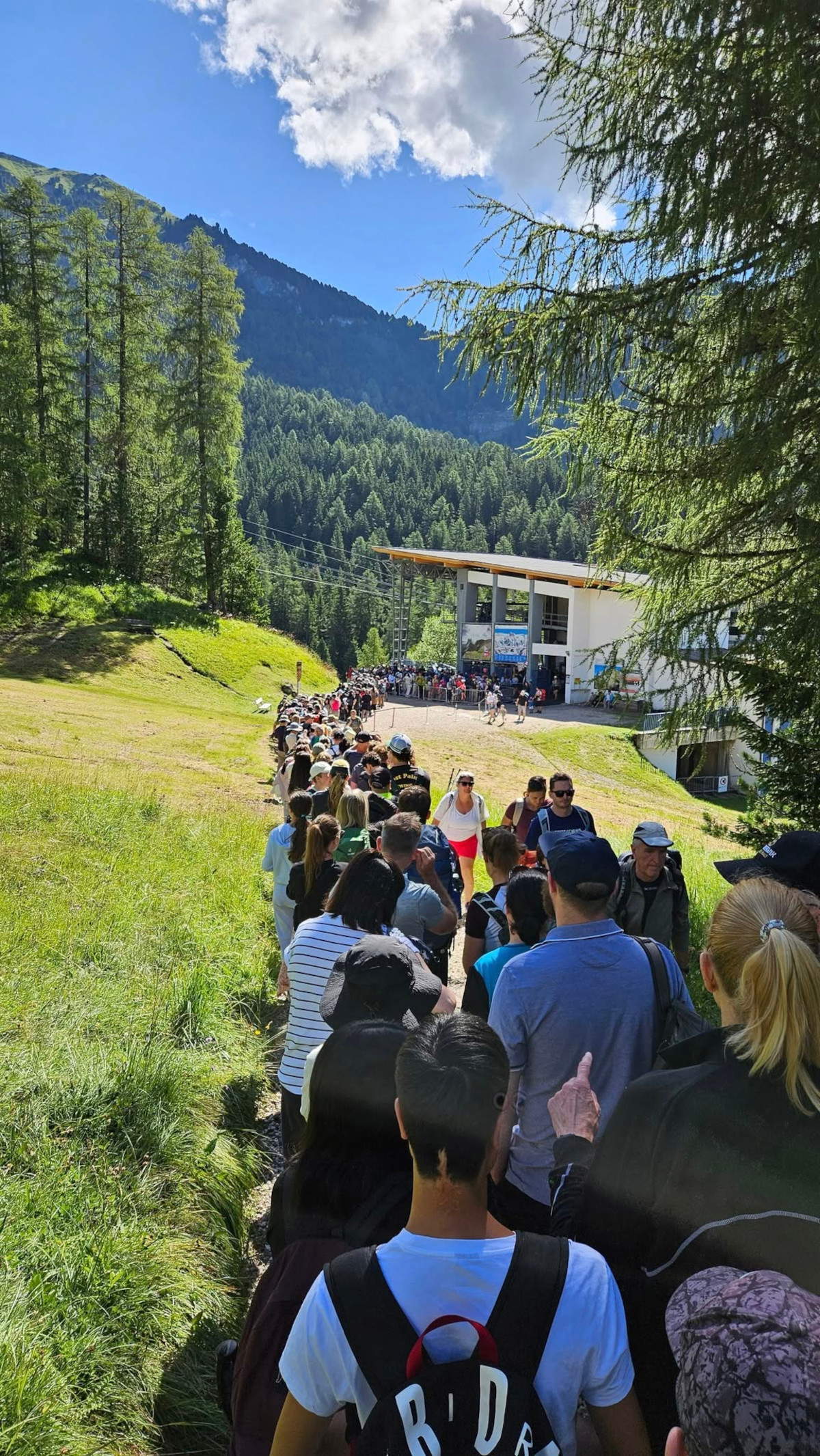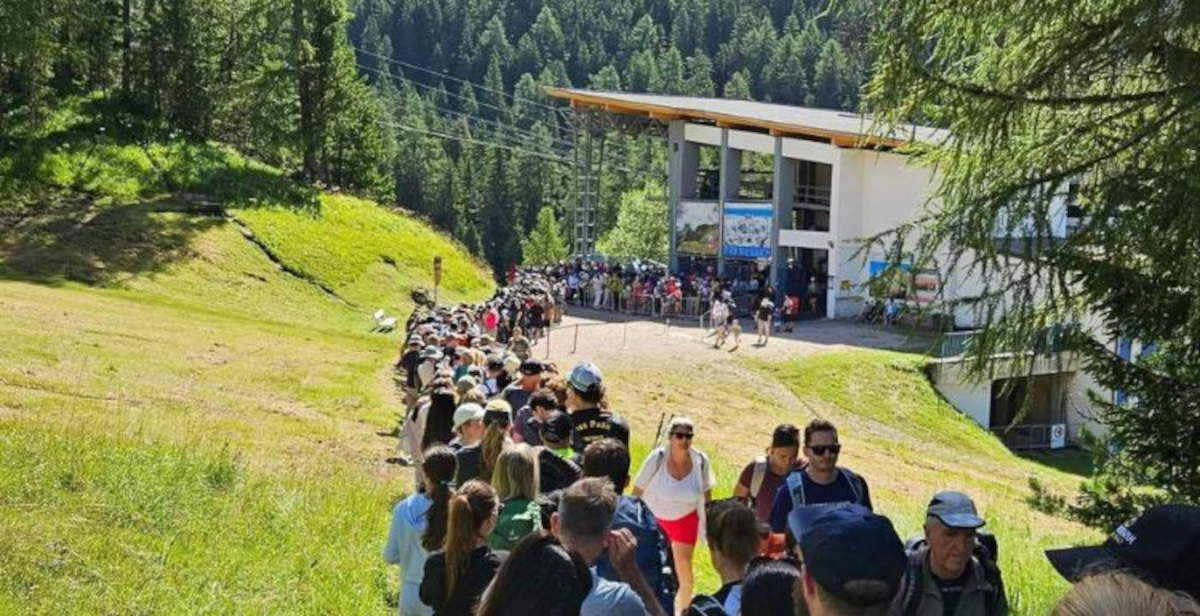The Seceda area, an alpine pasture located above Ortisei in Val Gardena (Bolzano province) in the Dolomites, is once again the focus of public attention due to increasing tourist pressure and some recent infrastructure choices. In the last few hours, as reported by the daily newspaper Il Corriere della Sera, social media have been flooded with photographs, footage and comments documenting thehigh tourist turnout in the area, with eloquent images of the long queues formed at the cable car stations connecting Ortisei to the top of Seceda. The footage taken on Tuesday, July 22, shows a steady stream of visitors waiting to reach the mountain via the cable car, particularly at the access points located at the village’s valley station and the intermediate Furnes station.
“Get there early... (Update: Or come after lunch and skip all the queues),” writes user Kim von Seth in the Dolomites for Beginners Facebook group, below the shot depicting the Seceda area overrun with tourists. The area, in recent years, has turned into one of the most popular destinations in the Dolomites, with an increasing number of tourists attracted by the alpine landscapes, hiking trails and the visibility gained also thanks to online media coverage. In any case, the increased flow has provoked mixed reactions, particularly among residents, hikers and environmentalists. Corriere della Sera openly speaks of a Disneyland effect, complaining about the loss of authenticity and the gradual transformation of the area into an overly touristic destination.
Already in recent weeks, Seceda had been at the center of a controversy related to the installation of a turnstile fee along one of the hut’s hiking trails(article here). Indeed, the image of the access device, posted and shared on social media by Carlo Alberto Zanella, president of the South Tyrol CAI, had provoked indignant reactions and ignited a debate about the public use of the mountain and the limits to accessibility imposed by some private managers. The discussion also touched on broader issues, such as the role of tourism infrastructure in natural areas and the delicate balance between landscape enjoyment and environmental protection.

Adding to this scenario is an additional element of tension: the company that operates the Furnes-Seceda cable car recently submitted a formal request to upgrade the cable car. The project, specifically, calls for an increase in transport capacity, with the goal of tripling the current capacity. A proposal that immediately generated strong critical reactions from environmental associations, concerned about the possible consequences on the local area and wildlife.
The increased tourist flows caused by the expansion of the plant could further compromise the ecosystem balance of the area. Criticism focuses in particular on the effects that more visitors could have on wild animals, such as marmots, which permanently inhabit the Seceda alpine area. Indeed, environmentalists speak of a real risk to local species and call for a more cautious approach to mountain land management.
Also according to Il Corriere della Sera, in the face of these concerns, the Autonomous Province of Bolzano has announced that it has initiated procedures for an Environmental Impact Assessment (EIA), a step deemed necessary before proceeding with any authorization. Requiring an EIA is a formal and technical step expected for works of this magnitude and represents, at least for the time being, a precautionary stop to the expansion project. The current debate reflects an issue affecting many Alpine resorts, which are increasingly affected by mass tourism that tends to concentrate presences at certain times of the year, putting pressure on infrastructure and landscape. In the case of Seceda, the controversies of recent days have highlighted the criticalities of a fruition model that focuses on high numbers and big-ticket attractions but risks compromising the long-term sustainability of the area.
Infrastructural choices and access policies thus become the terrain of confrontation between actors with even very divergent interests: on the one hand, the need to manage substantial flows and respond to a growing demand; on the other, environmental protection and respect for the characteristics proper to an Alpine territory. In the background, therefore, there remains the unresolved knot of how to guarantee conscious and sustainable access to the mountains, in a context in which tourist enhancement increasingly risks overlapping with landscape protection.
 |
| Dolomites, Val Gardena overwhelmed by tourists: lines, turnstiles and controversy over new cable car |
Warning: the translation into English of the original Italian article was created using automatic tools. We undertake to review all articles, but we do not guarantee the total absence of inaccuracies in the translation due to the program. You can find the original by clicking on the ITA button. If you find any mistake,please contact us.